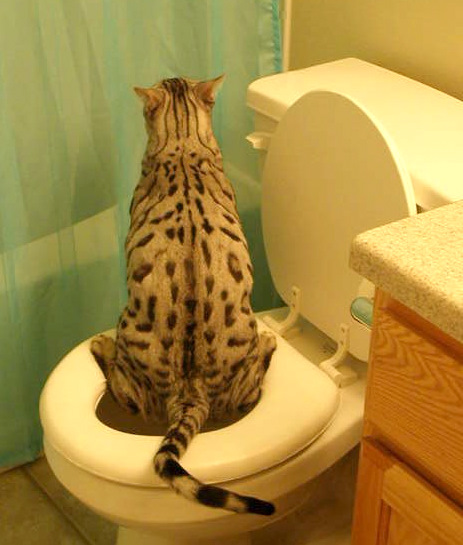Are you looking for related information on How to Dispose of Cat Poop and Litter Without Plastic Bags?

Introduction
As cat proprietors, it's essential to bear in mind how we take care of our feline pals' waste. While it might seem hassle-free to flush feline poop down the toilet, this technique can have detrimental effects for both the environment and human health and wellness.
Ecological Impact
Purging pet cat poop introduces unsafe pathogens and bloodsuckers into the water system, posing a considerable threat to marine environments. These impurities can negatively affect aquatic life and compromise water top quality.
Health Risks
Along with ecological concerns, purging pet cat waste can also position wellness risks to people. Pet cat feces may consist of Toxoplasma gondii, a parasite that can trigger toxoplasmosis-- a possibly severe disease, especially for expectant women and people with damaged immune systems.
Alternatives to Flushing
Luckily, there are more secure and a lot more liable ways to get rid of pet cat poop. Consider the complying with options:
1. Scoop and Dispose in Trash
One of the most common technique of taking care of cat poop is to scoop it into an eco-friendly bag and throw it in the garbage. Make certain to use a devoted trash inside story and dispose of the waste quickly.
2. Usage Biodegradable Litter
Go with biodegradable feline clutter made from products such as corn or wheat. These clutters are environmentally friendly and can be safely gotten rid of in the garbage.
3. Hide in the Yard
If you have a lawn, take into consideration hiding pet cat waste in a marked area far from veggie yards and water resources. Make certain to dig deep sufficient to avoid contamination of groundwater.
4. Install a Pet Waste Disposal System
Invest in a pet garbage disposal system specifically developed for pet cat waste. These systems use enzymes to break down the waste, minimizing smell and environmental effect.
Conclusion
Liable family pet ownership prolongs beyond providing food and shelter-- it also involves appropriate waste monitoring. By refraining from flushing cat poop down the commode and opting for alternate disposal techniques, we can lessen our ecological impact and secure human health and wellness.
Why Can’t I Flush Cat Poop?
It Spreads a Parasite
Cats are frequently infected with a parasite called toxoplasma gondii. The parasite causes an infection called toxoplasmosis. It is usually harmless to cats. The parasite only uses cat poop as a host for its eggs. Otherwise, the cat’s immune system usually keeps the infection at low enough levels to maintain its own health. But it does not stop the develop of eggs. These eggs are tiny and surprisingly tough. They may survive for a year before they begin to grow. But that’s the problem.
Our wastewater system is not designed to deal with toxoplasmosis eggs. Instead, most eggs will flush from your toilet into sewers and wastewater management plants. After the sewage is treated for many other harmful things in it, it is typically released into local rivers, lakes, or oceans. Here, the toxoplasmosis eggs can find new hosts, including starfish, crabs, otters, and many other wildlife. For many, this is a significant risk to their health. Toxoplasmosis can also end up infecting water sources that are important for agriculture, which means our deer, pigs, and sheep can get infected too.
Is There Risk to Humans?
There can be a risk to human life from flushing cat poop down the toilet. If you do so, the parasites from your cat’s poop can end up in shellfish, game animals, or livestock. If this meat is then served raw or undercooked, the people who eat it can get sick.
In fact, according to the CDC, 40 million people in the United States are infected with toxoplasma gondii. They get it from exposure to infected seafood, or from some kind of cat poop contamination, like drinking from a stream that is contaminated or touching anything that has come into contact with cat poop. That includes just cleaning a cat litter box.
Most people who get infected with these parasites will not develop any symptoms. However, for pregnant women or for those with compromised immune systems, the parasite can cause severe health problems.
How to Handle Cat Poop
The best way to handle cat poop is actually to clean the box more often. The eggs that the parasite sheds will not become active until one to five days after the cat poops. That means that if you clean daily, you’re much less likely to come into direct contact with infectious eggs.
That said, always dispose of cat poop in the garbage and not down the toilet. Wash your hands before and after you clean the litter box, and bring the bag of poop right outside to your garbage bins.
https://trenchlesssolutionsusa.com/why-cant-i-flush-cat-poop/

We had been shown that editorial about Can You Flush Cat Poop Down The Toilet? from an associate on a different web property. You should take a moment to promote this write-up if you enjoyed reading it. I am grateful for your time. Visit us again soon.
Start Now